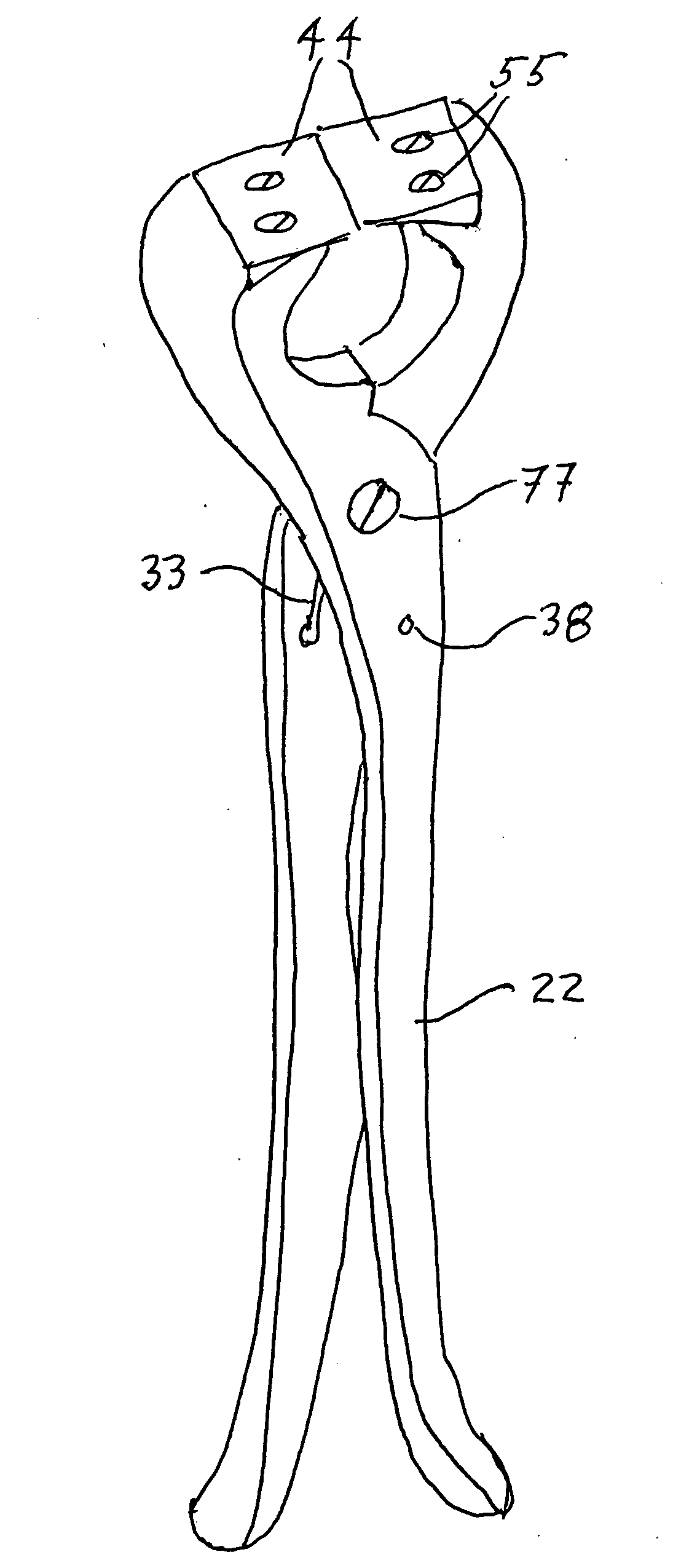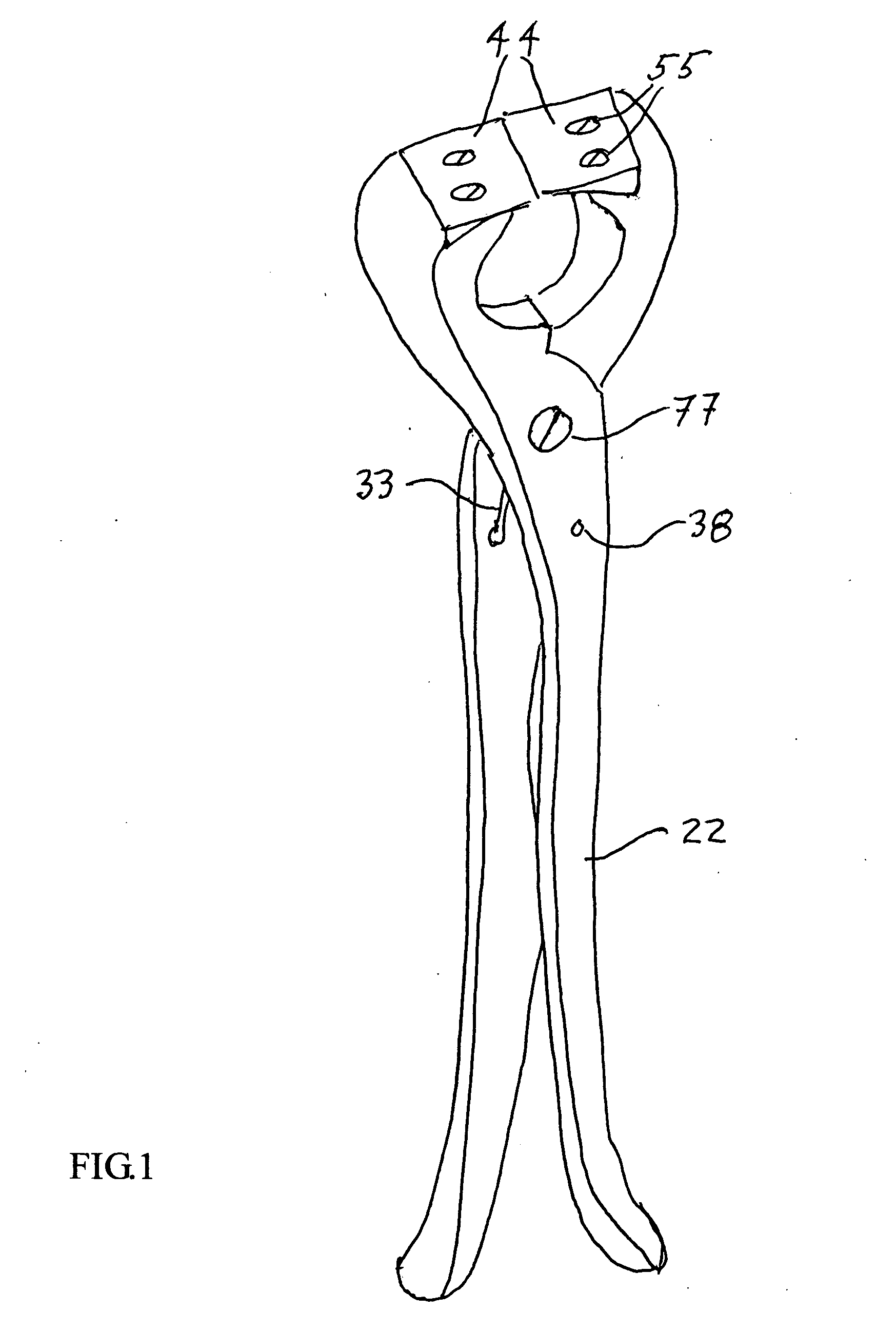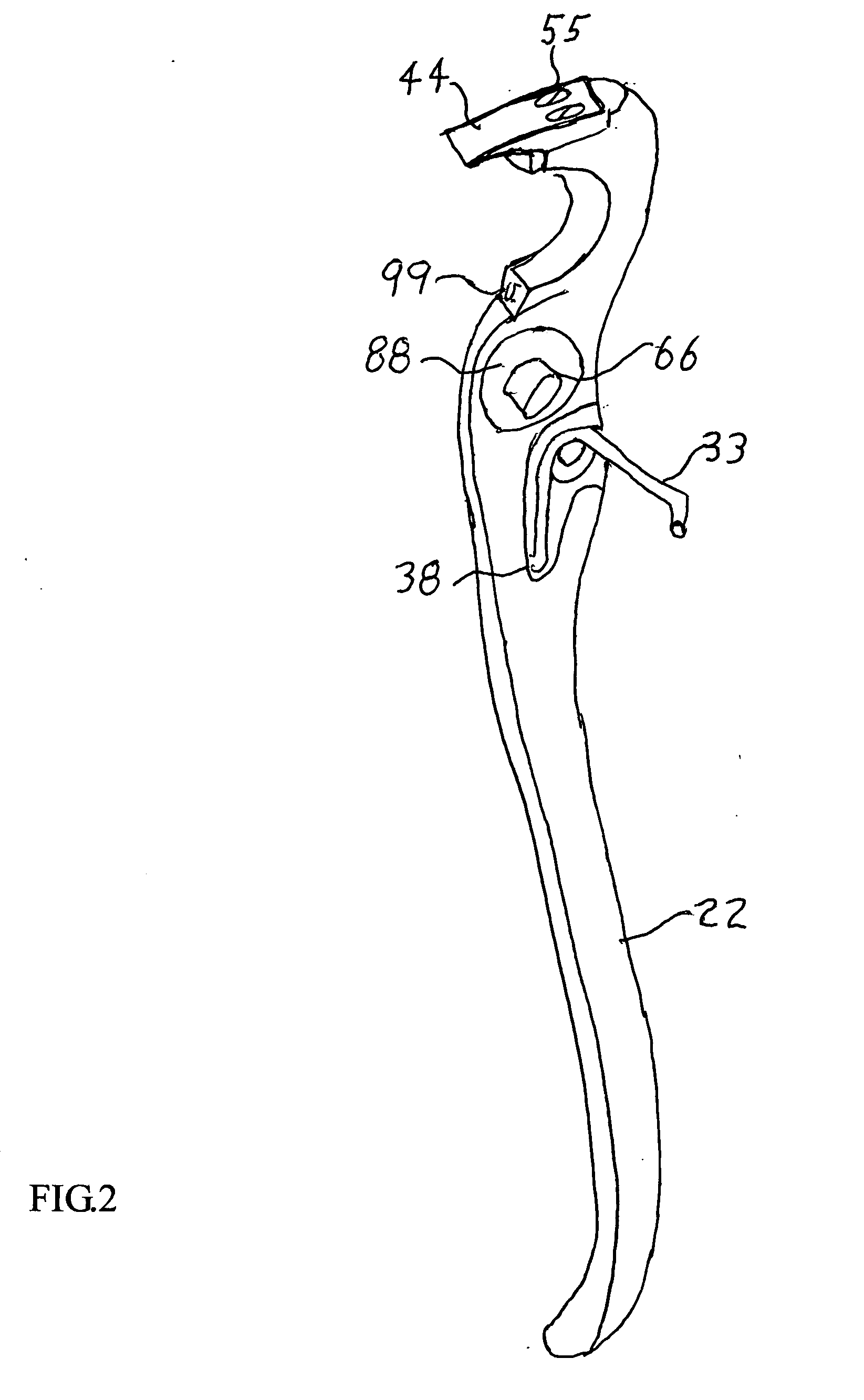Spring biased lightweight ergonomic nipper with replaceable blades to accommodate smaller hands and one-handed use
a lightweight, ergonomic technology, applied in the field of cutting nippers, can solve the problems of unfavorable small hands or one-handed use, unfavorable small hands and one-handed use, and inability to properly harden, so as to achieve the effect of convenient and durable cutting and easy cutting
- Summary
- Abstract
- Description
- Claims
- Application Information
AI Technical Summary
Benefits of technology
Problems solved by technology
Method used
Image
Examples
Embodiment Construction
FIG. 1 is a perspective view of a torsion type spring 33 biased nipper with handles 22 spaced narrowly apart to allow a small hand to utilize them one-handed. Besides the handles themselves being parallel at a narrow spacing, the distal ends of the handles 22 are even closer together to allow the handles to be gripped with a narrower grip at the distal ends for greater leverage. FIG. 1 also shows the placement of the pivot screw 77. FIG. 1 also shows the mounting of the fastener affixed carbide blades 44 with countersunk screws 55. FIG. 1 also shows the spring anchor hole 38 where the leg of the spring will attach. FIG. 2 shows a perspective view of the interior side of the disclosed nipper with the recess for mounting the torsion spring 33, the hole for the pivot bushing 66, and the hole 38 for anchoring the end of the torsion spring 33. FIG. 2 also shows the polymer washer 88 mounted between the handles 22 to further reduce friction and wear. The torsion type spring 33 is used bec...
PUM
 Login to View More
Login to View More Abstract
Description
Claims
Application Information
 Login to View More
Login to View More - R&D
- Intellectual Property
- Life Sciences
- Materials
- Tech Scout
- Unparalleled Data Quality
- Higher Quality Content
- 60% Fewer Hallucinations
Browse by: Latest US Patents, China's latest patents, Technical Efficacy Thesaurus, Application Domain, Technology Topic, Popular Technical Reports.
© 2025 PatSnap. All rights reserved.Legal|Privacy policy|Modern Slavery Act Transparency Statement|Sitemap|About US| Contact US: help@patsnap.com



